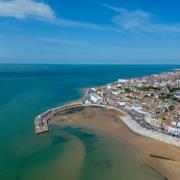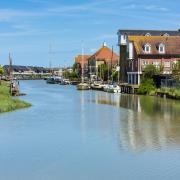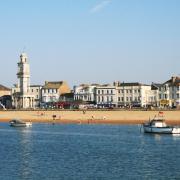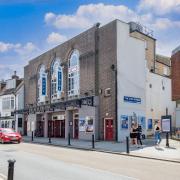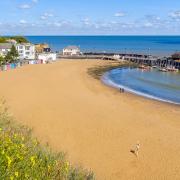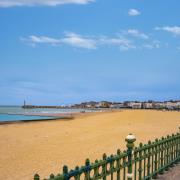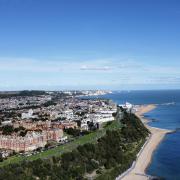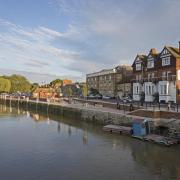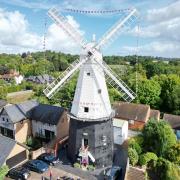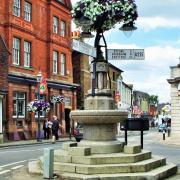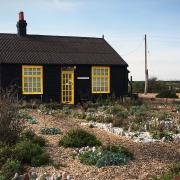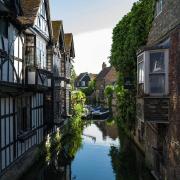A look back at England's most notorious smugglers, the Hawkhurst Gang, whose exploits were on everybody's lips in the south east 300 years ago...
Pouncer, Funny Jack, Footsey and Butcher Tom... these characters sound as though they could have stepped out of a nursery rhyme, but in reality they were 18th-century smugglers who would have given most small children nightmares.Nearly 300 years ago, stories about the Hawkhurst Gang were on everybody's lips, not just in the Wealden village where this notorious band of smugglers based their lucrative business, but across the south east, stretching from Deal in Kent to Poole in Hampshire. While the detail of these stories may have been adapted with time, their substance is not in doubt. The gang's exploits were legendary and some say they virtually ruled the south east for a period. In 1744 it is recorded that three large cutters laden with contraband sailed into Pevensey. The goods were loaded onto 500 waiting packhorses to be carried inland for distribution. Their ability to put such a huge transport convoy in place, and brazenness in running their illegal trade so openly, says much about the extent of their power and influence.In many ways, the time was right for such an enterprise. Britain was about to become the powerhouse of the industrial revolution in the early 18th century, but in the countryside, all was not well. The population was rising but jobs were scarce and the land enclosures had put many smaller farmers out of business altogether. Faced with many mouths to feed, some people turned to smuggling as an alternative career. In Hawkhurst, this was taken to new levels. A hard core of gang leaders ran what appears to have been a village-wide 'cottage industry' with much of the population taking part in larger free trading operations such as the Pevensey landing, joined by others from across Kent, Sussex and even Hampshire and East Anglia.The smugglers hatched their plans for smuggling tea, brandy, rum and coffee across from France and the Channel Islands at meetings held in local pubs still running today.They include their 'HQ' the Oak & Ivy on the Sandhurst Road in Hawkhurst, where the graffiti they scrawled on the attic beams remains.There is also evidence of tunnels running from the pub to the Queen's Inn and Royal Oak in Hawkhurst, alternative meeting places. 'Sightings' of a ghostly pair of legs sticking down from the Queen's inglenook fireplace are reputed to belong to a smuggler who suffocated while hiding from Customs officials.The Great House at Gills Green - then named The Staymaker Arms - was another favoured location and provided the pseudonym for one of the smugglers. Also the Mermaid Inn in Rye, where one curious listener to the gang's gossip was 'disappeared'.Seacox House, on the road from Flimwell to Hawkhurst, was built by the gang's first leader, Arthur Gray, with large basement cellars to conceal contraband. The house has since been rebuilt, but is still largely hidden from view and shrouded in mystery and intrigue as a Russian Embassy residence during the Cold War and in the present day.The gang appears to have ruled through a mix of carrot and stick - those who opposed them were threatened or suffered violence, while those who cooperated shared in the fruits. Woe betide any farmer who would not lend his animals and carts. But for those who left their stable door open on a particular night a gift of Geneva (gin) or tea would appear the next morning. For those who did not, stables and barns could mysteriously burn down. Even the clergy would allow churches and churchyards to be used for storehouses.The gang's comeuppance came following an incident in September 1747, when their violence took a new and more sinister turn. According to Smugglers Murders (sic), a book published at the time (and reprinted recently), one of them had brought a large cargo of brandy, tea and rum over from France on his cutter, but it was captured and seized by Customs and stored in the Customs House in Poole, Dorset.The gang mustered a party to attack the Customs House and managed to rescue their precious cargo. But their violent attack attracted a large reward for information leading to their capture.When a man known to the gang, Chater, was seen some time later in a pub with a customs officer named Galley, it was assumed he was an informer. Both men were drugged, then woken by being whipped. They were tied to a horse and whipped again until nearly dead.Galley was thought dead and buried - alive, as it turned out. Chater's fate was even worse. He was kept chained in a shed for a few days. Then, to intimidate other informers, he was beaten again, thrown down a 30-foot well and large stones were hurled at him until he died.Up to this point the gang had been looked upon as benefactors by local people, rather in the Robin Hood mode. But this was one step too far. Others began to inform and Arthur Gray was captured and executed in 1748 for the earlier murder of Thomas Carswell, a revenue officer.A new leader, Thomas Kingsmill from Goudhurst, took over from Gray, but the gang was not the same after a local militia from Goudhurst had defeated them in a pitched battle in 1747.Eventually Kingsmill and other gang members were captured, put in trial in Chichester and executed, their corpses being gibbeted in irons and chains in their villages as a deterrent to others. This effectively ended this infamous chapter in Hawkhurst's history.Hawkhurst today is a much more peaceful place to live, work and visit, but local people still show great enterprise in facing difficult economic times - all above board, of course.The recently launched Hawkhurst Community Partnership, working with the Parish Council, has attracted SEEDA funding for a range of projects to provide opportunities for local people and to support local businesses. One of the projects is a smugglers' trail to attract more visitors to the area to support tourism, to be launched in 2011. The Hawkhurst Gang would no doubt be amazed that their notorious reputation had not only survived three centuries, but was once again helping to boost village prosperity.



